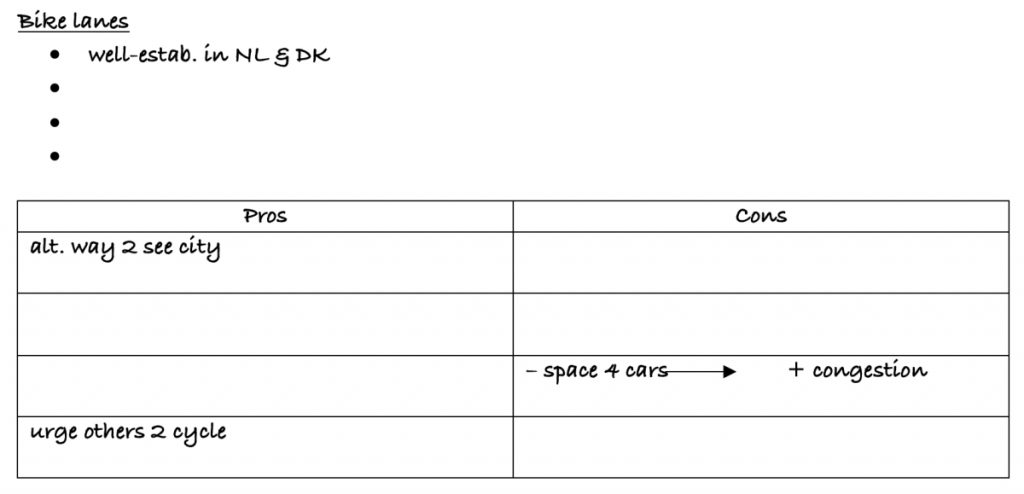4x Mini-lecture Practice 2
Task 4
One common way to make notes is using a linear method. You can organise your notes using headings, numbers and bullet points. Look at the examples:

Listen to a two-minute lecture on public health campaigns. Check the vocabulary before you listen. Then take notes using the linear method and try to use as many abbreviations and symbols as you can. Listen as many times as you like. If you’d like more guidance, then use the note-taking framework in the drop-down menu.
Review
- Compare your notes with the model notes (ANSWERS).
- What could you do better?
Task 5
Another common method for taking notes is to use a spider gram (mind map). This is a good way to show relationships between ideas. Look at the example:

Listen to a two-minute lecture on reasons for the decline in printed newspapers. Check the vocabulary before you listen. Then take notes using a spider gram and try to use as many abbreviations and symbols as you can. Listen as many times as you like. If you’d like more guidance, then use the note-taking framework in the drop-down menu.
Review
- Compare your notes with the model notes (ANSWERS).
- What could you do better?
Task 6
Another common method for taking notes is to use a table. This is a good way to show comparison of two things. Look at the example:

Listen to a two-minute lecture on which factors influence our sleeping habits and their effects. Check the vocabulary before you listen. Then take notes using a table and try to use as many abbreviations and symbols as you can. Listen as many times as you like. If you’d like more guidance, then use the note-taking framework in the drop-down menu.
Review
- Compare your notes with the model notes (ANSWERS).
- What could you do better?
Task 7
Most of the time we take notes using a variety of different methods. We may start with linear but then we may include a spider gram to show cause and effects or a table to show comparison. Look at the following example:

Listen to a two-minute lecture on the impacts of bike lanes in cities. Take notes using the linear method and a table. Check the vocabulary before you listen. Then take notes using the linear method and a table and try to use as many abbreviations and symbols as you can. Listen as many times as you like. If you’d like more guidance, then use the note-taking framework in the drop-down menu.
Review
- Compare your notes with the model notes (ANSWERS).
- What could you do better?
-
Digital Documents
Complete Lesson 2 Booklet
- Note-taking Methods 2 Booklet: Listening Note-taking Methods 2 Booklet by AEUK
Listening Transcripts
- 4x Mini-lecture Transcript: Mini-Lecture Practice 2 Transcript








